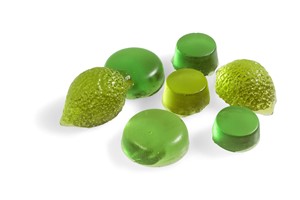Development of ice cream that are lactose free will support the growth of organic ice cream market size. Some people cannot digest lactose present in the milk as its consumption leads to several problems which include acidity, bloating and diarrhea. This has resulted in numerous ice cream manufacturers to formulate lactose-free ice creams for catering to niche market of lactose intolerant customers. The market is affected by the trend of increasing non-synthetic ingredients in ice cream. Therefore, this has shifted ice cream manufacturers' focus towards the product. Non-synthetic product is produced by the combination of biological, cultural and mechanical practices to conserve biodiversity, increase recycling of resources and promote ecological balance. Organic ice cream is usually made of non-synthetic ingredients named, biological milk, egg yolks and cream mixed with sweetening agents, stabilizers, emulsifiers and flavors. Some of the benefits provided by product include high vitamin & mineral content and low fat & sugar content. Moreover, hypermarkets and supermarkets are expected to contribute to the market growth, but specialist stores, independent retailers and convenience stores will also continue to play an important role in product market growth. Supermarkets & hypermarkets are the fastest growing segment due to increasing customer foot fall and recent opening of many malls in metropolitan cities and sub-urban areas. The major restraint for organic ice cream market is the high competition from regular ice creams available in the market. Besides, manufacturers of the product are required to deal with seasonal demand fluctuations that causes variation in supply and demand outlook of the industry. The market is divided into three types: artisanal, impulse and take home. Impulse ice cream segment is expected to grow at a rapid pace owning to demand for small portion snacking options. Further, price sensitive consumers will affect the demand for take home ice cream in the long run. The product is available in four types which include reduced fat, low fat, light and fat free. Low fat ice creams hold the largest market segment due to rise in health-conscious customers. Reduced fat ice cream contains 25% less fat relative to regular ice cream, while low fat ice cream holds less than 3 grams of fat compared to regular ice cream. Based on packaging type, organic ice cream is available in three packages name, tub, bag and wrapper. Tub is likely to acquire the highest market share in the package type segment as it is easy to carry, contains volume and available at a reasonable price. U.S. holds the largest share for organic ice cream market. Increasing diabetic population and health conscious customers in the region is anticipated to drive the product market. Additionally, the U.S. ice cream market is concentered with the presence of many multinational companies as well as some regional players who offer private label products at a low price. Asia Pacific is the fastest growing region for the market due to rise in consumer awareness, change in lifestyle and entry of many multinational companies in Asian market. Most of the countries in Asia Pacific lie in tropical or sub-tropical region that receive maximum heat, thus driving the product market as ice creams are mostly preferred during summer.


Web: www.gminsights.com














